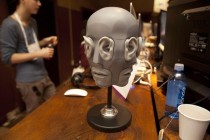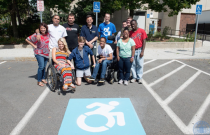Author Archives: ben

A Teenie Studio, Final Project (prior: Hill District)
For my final project, I expanded the scope of interest from imagery of the Hill District to the Teenie Harris archive as a whole. Specifically, my focus became Teenie’s studio practice, which included a large set of photos in front

A Teenie Studio, Final Project (prior: Hill District)
For my final project, I expanded the scope of interest from imagery of the Hill District to the Teenie Harris archive as a whole. Specifically, my focus became Teenie’s studio practice, which included a large set of photos in front

Teenie Harris Recreations
These are all of the recreations of Teenie Harris photographs of existing structures to date. Within each diptych is first my recreation from his point of view, then the original photograph from over half a century ago. The single images are

Teenie Harris Recreations
These are all of the recreations of Teenie Harris photographs of existing structures to date. Within each diptych is first my recreation from his point of view, then the original photograph from over half a century ago. The single images are
Civic, Considered, and Sustainable Art Practice
Talks on Youtube: Open Engagement, Rick Lowe OpenEngagement, Tom Finkelpearl Book on Contextual Practice: What We Made, by Tom Finkelpearl
Civic, Considered, and Sustainable Art Practice
Talks on Youtube: Open Engagement, Rick Lowe OpenEngagement, Tom Finkelpearl Book on Contextual Practice: What We Made, by Tom Finkelpearl

Final Project: The Hill District
March 25 Update Question: Is it worthwhile to recreate places where there is no visually present community (in the form of people) in the original photograph? Is this time wasted? Does seeing the congregation of New Covenant Church “place” the

Final Project: The Hill District
March 25 Update Question: Is it worthwhile to recreate places where there is no visually present community (in the form of people) in the original photograph? Is this time wasted? Does seeing the congregation of New Covenant Church “place” the

R3 – VR Research: Non-Visual Precursors
Virtual Reality isn’t new. The visual flavor has been around for some time, and is gaining increasing popularity and widespread use these days with such advancements as Youtube 360 and Google Cardboard. However, the idea of creating an alternate immersive reality,

R3 – VR Research: Non-Visual Precursors
Virtual Reality isn’t new. The visual flavor has been around for some time, and is gaining increasing popularity and widespread use these days with such advancements as Youtube 360 and Google Cardboard. However, the idea of creating an alternate immersive reality,
R2 – Response to Readings
The X, Y and Z of digital storytelling: Dramaturgy, directionality, and design (2015) This article didn’t explain itself fully or provide a comprehensive description of the axes of storytelling, especially the Z axis for which the authors had particular admiration.
R2 – Response to Readings
The X, Y and Z of digital storytelling: Dramaturgy, directionality, and design (2015) This article didn’t explain itself fully or provide a comprehensive description of the axes of storytelling, especially the Z axis for which the authors had particular admiration.
R1 – Response to Readings
“Storytelling for Oppositionists and Others: A Plea for Narrative” by Richard Delgado (1989) I was particularly taken the way in which this article manipulated the way I felt about the situation every time it presented a different point of view.
R1 – Response to Readings
“Storytelling for Oppositionists and Others: A Plea for Narrative” by Richard Delgado (1989) I was particularly taken the way in which this article manipulated the way I felt about the situation every time it presented a different point of view.

“Parable of the Polygons” by Nicky Case and Vi Hart (2014)
“Parable of the Polygons” is an interactive online webpage that aims to show, through hands-on experience, how small biases can have a large effect. It was made in 2014 by artist and game developer Nicky Case and mathematician / educator Vi

“Parable of the Polygons” by Nicky Case and Vi Hart (2014)
“Parable of the Polygons” is an interactive online webpage that aims to show, through hands-on experience, how small biases can have a large effect. It was made in 2014 by artist and game developer Nicky Case and mathematician / educator Vi

“Accessible Icon Project” by Sara Hendren and Brian Glenny (2010)
ISO 7001 Dot Pictograms are the stick figure icons that pervade signs of public space. They’re extremely communicative, but one in particular has received a lot of attention recently as being particularly demoting—the universal symbol for accessibility, more commonly known

“Accessible Icon Project” by Sara Hendren and Brian Glenny (2010)
ISO 7001 Dot Pictograms are the stick figure icons that pervade signs of public space. They’re extremely communicative, but one in particular has received a lot of attention recently as being particularly demoting—the universal symbol for accessibility, more commonly known

